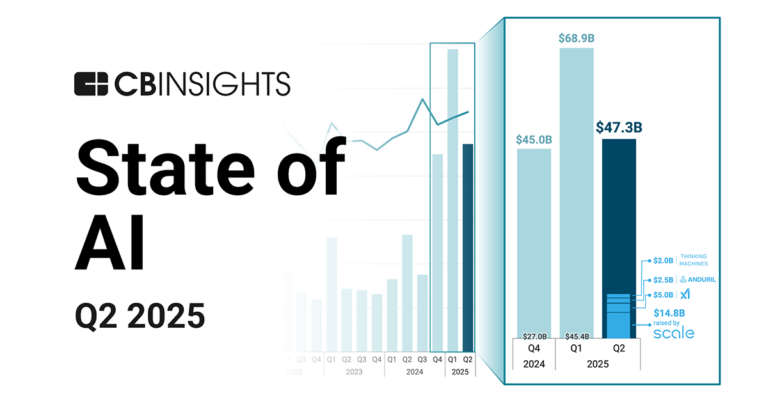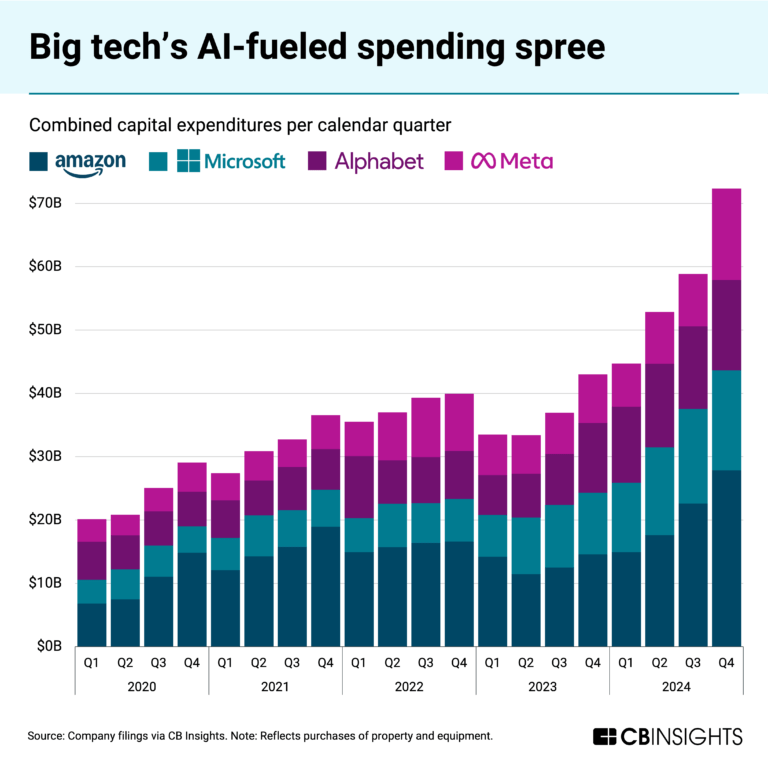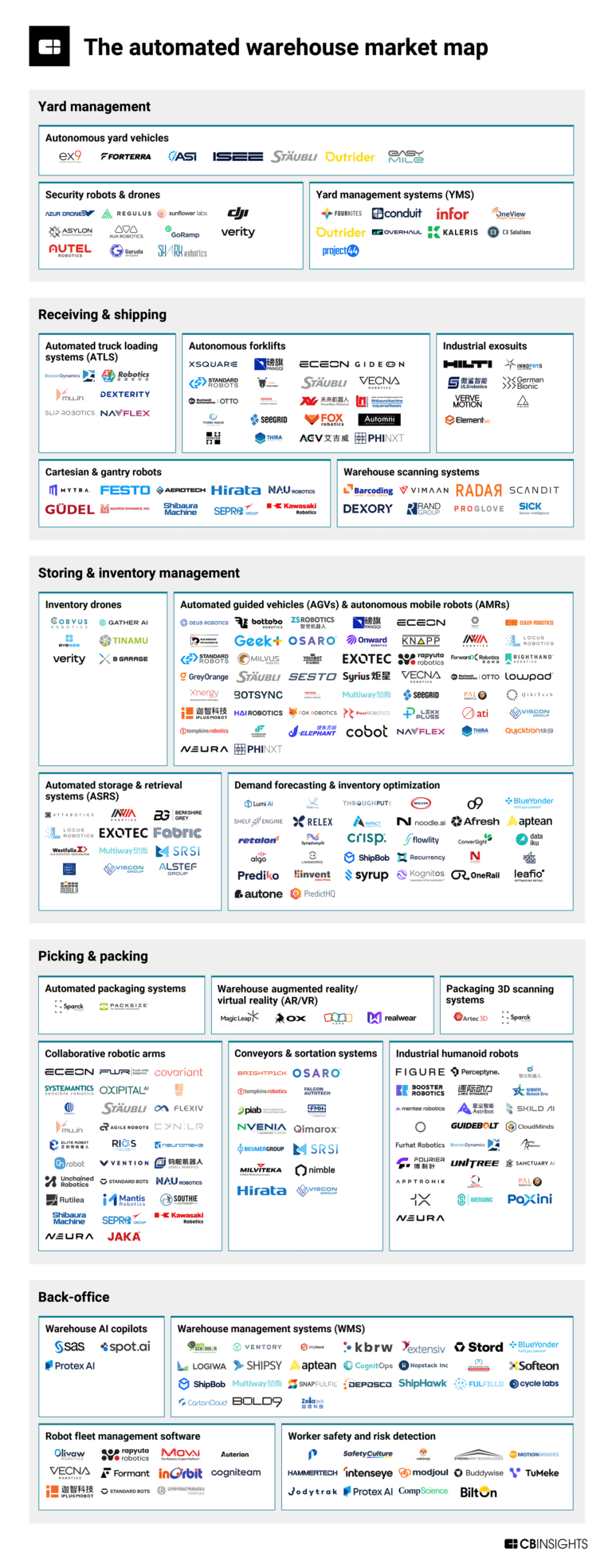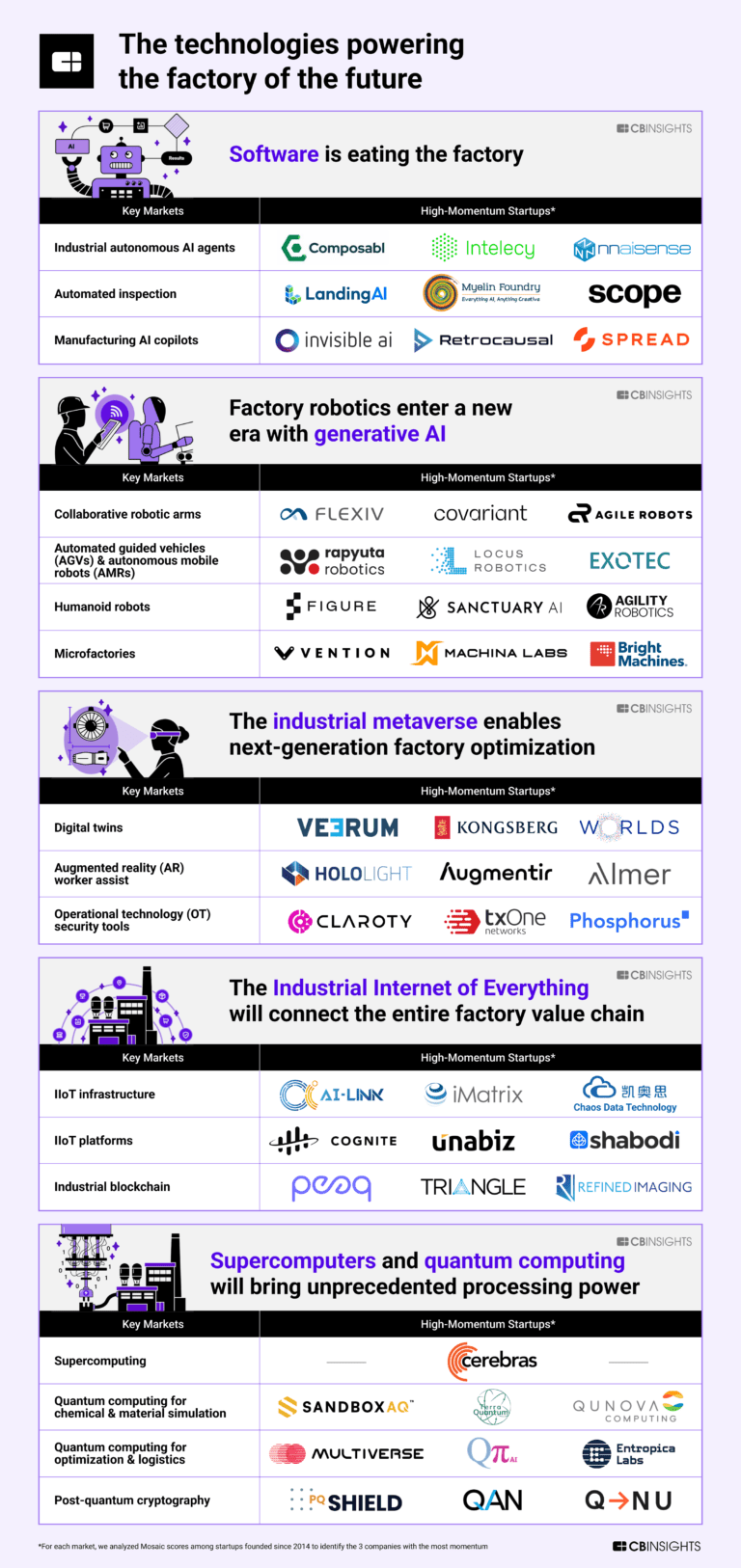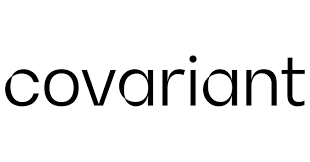
Covariant
Founded Year
2017Stage
Series C - II | AliveTotal Raised
$207MValuation
$0000Last Raised
$80M | 2 yrs agoRevenue
$0000Mosaic Score The Mosaic Score is an algorithm that measures the overall financial health and market potential of private companies.
-55 points in the past 30 days
About Covariant
Covariant develops automation solutions using artificial intelligence (AI) in the robotics sector. Its main offering, the Covariant Brain, is an AI platform intended to allow robots to pick various items autonomously from day one, supporting warehouse operations. Its technology is used by fulfillment companies to improve operational processes and tackle labor challenges. It was formerly known as Embodied Intelligence. It was founded in 2017 and is based in Emeryville, California.
Loading...
Covariant's Product Videos
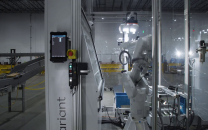
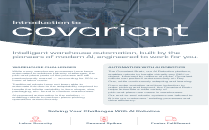
ESPs containing Covariant
The ESP matrix leverages data and analyst insight to identify and rank leading companies in a given technology landscape.
The robot foundation model developers market refers to the segment of the artificial intelligence and robotics industry focused on developing foundational AI models for a wide variety of robotic form factors. These models, built on advanced machine learning architectures, provide the underlying capabilities for a wide array of robotic tasks, such as perception, decision-making, and interaction. Th…
Covariant named as Challenger among 15 other companies, including Microsoft, Meta, and Amazon.
Covariant's Products & Differentiators
Robotic Putwall
ln batch picking operations for apparel, health & beauty, general ecommerce, etc., Covariant robotic solutions can autonomously sort items into an order bin or putwall — freeing up workers for more value-added tasks while increasing throughput.
Loading...
Research containing Covariant
Get data-driven expert analysis from the CB Insights Intelligence Unit.
CB Insights Intelligence Analysts have mentioned Covariant in 4 CB Insights research briefs, most recently on Jul 31, 2025.
Expert Collections containing Covariant
Expert Collections are analyst-curated lists that highlight the companies you need to know in the most important technology spaces.
Covariant is included in 7 Expert Collections, including Robotics.
Robotics
2,716 items
This collection includes startups developing autonomous ground robots, unmanned aerial vehicles, robotic arms, and underwater drones, among other robotic systems. This collection also includes companies developing operating systems and vision modules for robots.
AI 100 (All Winners 2018-2025)
300 items
The winners of the 4th annual CB Insights AI 100.
Future Unicorns 2019
50 items
Supply Chain & Logistics Tech
754 items
Advanced Manufacturing
6,879 items
Companies in the advanced manufacturing tech space, including companies focusing on technologies across R&D, mass production, or sustainability
Future of the Factory (2024)
436 items
This collection contains companies in the key markets highlighted in the Future of the Factory 2024 report. Companies are not exclusive to the categories listed.
Latest Covariant News
Aug 8, 2025
August 8, 2025 Reinforcement learning (RL) is transforming the way robots interact with the world. Unlike traditional programming or supervised learning, which depend on pre-defined rules or labeled datasets, RL enables robots to learn through trial and error – much like how humans and animals acquire new skills. This approach is increasingly vital as robots are deployed in complex, unstructured environments where adaptability is key. Learning from interaction At its core, reinforcement learning is about decision-making under uncertainty. A robot (the agent) interacts with its surroundings (the environment) by taking actions and receiving feedback in the form of rewards or penalties. Over time, the robot learns which actions lead to positive outcomes and adjusts its behavior accordingly. This process requires a balance between exploration (trying new actions) and exploitation (sticking with what works). The resulting policy – or strategy – evolves to maximize long-term success, whether that’s grasping a new object, walking over uneven terrain, or navigating a cluttered warehouse. Why robots need RL Conventional programming methods struggle when robots must operate in dynamic, unpredictable settings. For example, a factory robot may need to handle a new product shape, or a mobile robot may encounter unexpected obstacles. Rather than hard-coding every scenario, RL allows robots to adapt autonomously. Key advantages of RL in robotics include: Improved generalization across diverse tasks Autonomous adaptation to real-world variability Reduced need for manual reprogramming Enhanced performance through continuous learning Real-world applications of RL in robotics Reinforcement learning is already being used to tackle some of the most challenging problems in robotics: Grasping and manipulation: Robots use RL to learn how to pick up irregular, deformable, or unfamiliar objects – a major leap forward for warehouse automation and assistive robotics. Locomotion: Four-legged and humanoid robots are learning to walk, run, and recover from stumbles using RL algorithms that optimize motor control. Navigation and obstacle avoidance: RL helps robots find efficient paths through dynamic environments, learning from previous routes and adapting to changing conditions. Precision assembly: RL is used in manufacturing environments where tight tolerances and variable inputs require continuous refinement. Training in simulation Because real-world training can be slow, costly, or unsafe, most RL systems are trained in simulated environments before being deployed physically. Platforms like MuJoCo, Isaac Sim, and OpenAI Gym offer fast, physics-accurate simulations where robots can attempt thousands of tasks per second. To bridge the gap between simulation and reality, engineers use techniques such as: Domain randomization: Varying the simulation parameters so the model can generalize better in the real world Sim2real transfer: Transferring policies learned in simulation to physical robots while minimizing performance drop-off Self-supervised learning: Allowing the robot to collect its own training data through exploration These methods have dramatically improved RL’s practicality in industrial and commercial settings. Breakthroughs and momentum Several high-profile demonstrations have shown what’s possible when reinforcement learning is applied to robotics: OpenAI’s robotic hand successfully solved a Rubik’s Cube, adapting in real time to environmental disturbances. Google DeepMind trained robots to stack blocks with high precision using vision-based RL. Covariant, a startup focused on warehouse robotics, uses reinforcement learning to power adaptive picking systems that improve with each object handled. Boston Dynamics integrates elements of learned control with its traditional model-based methods to enhance agility and flexibility in robots like Atlas and Stretch. These examples illustrate a growing convergence of RL, simulation, and real-world deployment, signaling a major shift in how autonomous systems are designed. Challenges ahead Data inefficiency: RL often requires millions of interactions, which can be impractical without simulation. Reward engineering: Designing the right reward function is critical and often non-trivial. Safety concerns: Trial-and-error learning can lead to undesirable or dangerous behavior if not carefully constrained. Transfer learning: Robots that learn one task may still struggle to generalize to others without additional training. Researchers are addressing these issues by integrating RL with imitation learning, supervised learning, and model-based planning to improve sample efficiency and stability. The future of RL-powered robotics The long-term vision for RL in robotics includes: Lifelong learning: Robots that continue to learn and refine their skills after deployment Multi-task agents: Generalist robots capable of switching between diverse tasks without retraining Democratized development: Easier access to RL tools and simulators for engineers and startups Edge-based learning: Robots that learn locally using onboard compute and occasional cloud updates As reinforcement learning matures, it’s likely to become a foundational element of intelligent robotics, enabling systems that are not just automated, but truly autonomous. Key companies providing reinforcement learning technologies for robotics 1. OpenAI Offering: OpenAI Gym Overview: A popular open-source toolkit for developing and comparing RL algorithms. Gym provides standardized environments for benchmarking, widely used in both academia and industry. While originally focused on simple simulations, Gym environments have been extended for robotic arms, locomotion, and more. Use case: Basis for many RL research papers and prototypes in robotic control. 2. DeepMind (a subsidiary of Alphabet/Google) Offering: Custom RL algorithms, simulation environments Overview: DeepMind has pioneered numerous RL breakthroughs, including teaching robotic arms to grasp and stack objects. It developed the DM Control Suite, a set of RL benchmarks focused on continuous control. Use case: Robotic manipulation, locomotion, and AI research at scale; partnerships with Google’s hardware teams. 3. Nvidia Offering: Isaac Sim Overview: A powerful simulation platform for training RL agents in photorealistic environments with physics-based realism. Isaac Sim integrates with NVIDIA’s GPU-accelerated hardware and supports domain randomization for sim2real transfer. Use case: Industrial robot training, autonomous vehicle development, factory automation. 4. Mujoco (DeepMind-owned) Offering: Physics engine optimized for RL Overview: MuJoCo (Multi-Joint dynamics with Contact) is a fast and accurate physics simulator, widely used in academia and by companies for robotic RL tasks. It models complex contacts and articulated systems with minimal computational overhead. Use case: Simulating humanoid robots, legged robots, manipulators. 5. Covariant Offering: AI-powered robotic picking systems Overview: Covariant builds warehouse robots that use RL and self-supervised learning to improve their performance over time. The system learns new object types autonomously and adapts to complex environments. Use case: E-commerce and warehouse automation; investment backed by Index Ventures and Radical Ventures. 6. Vicarious (acquired by Intrinsic, part of Alphabet) Offering: Brain-inspired AI using RL and unsupervised learning Overview: Developed general-purpose robotic control algorithms using a mix of reinforcement and unsupervised learning. Its technology was integrated into Intrinsic, Alphabet’s robotics software initiative. Use case: Flexible industrial automation, particularly in manufacturing. 7. Boston Dynamics AI Institute Offering: R&D in RL for advanced locomotion and manipulation Overview: Though famous for hardware, Boston Dynamics has increasingly incorporated RL for agility and decision-making in robots like Atlas and Stretch. The AI Institute, launched in 2022, focuses on combining model-based control with learned behaviors. Use case: Humanlike movement, warehouse and logistics robotics. 8. Roboschool / PyBullet (now part of Meta AI research ecosystem) Offering: Lightweight physics simulators for RL training Overview: Roboschool and PyBullet are accessible platforms for simulating physics-based robotics environments. Used heavily in RL research and supported by a large open-source community. Use case: Academic experiments, lightweight robotic simulations. 9. Wayve Offering: End-to-end reinforcement learning for autonomous driving Overview: A UK-based startup developing RL-driven autonomous vehicle systems. Unlike traditional rule-based AV systems, Wayve uses deep RL and simulation to generalize across different driving conditions. Use case: Autonomous delivery vehicles and commercial fleets; backed by Microsoft and Eclipse Ventures. 10. Open Robotics (now part of Intrinsic) Offering: Gazebo simulator, ROS integration Overview: While not RL-specific, Gazebo is widely used in RL research and deployment when combined with reinforcement learning toolkits. It simulates physical environments for testing robotic behaviors before real-world deployment. Use case: RL experimentation for robots using the Robot Operating System (ROS). 11. Amazon Robotics / AWS RoboMaker Offering: Cloud simulation and RL training environments Overview: AWS RoboMaker provides cloud-based robotics simulation and training services. It integrates with Gym, ROS, and Gazebo, and allows running large-scale RL experiments. Use case: Scalable robotic RL training in the cloud for industrial and logistics systems. Share this:
Covariant Frequently Asked Questions (FAQ)
When was Covariant founded?
Covariant was founded in 2017.
Where is Covariant's headquarters?
Covariant's headquarters is located at 5905 Christie Avenue, Emeryville.
What is Covariant's latest funding round?
Covariant's latest funding round is Series C - II.
How much did Covariant raise?
Covariant raised a total of $207M.
Who are the investors of Covariant?
Investors of Covariant include Amplify Partners, Radical Ventures, Index Ventures, CPP Investments, Gates Frontier and 17 more.
Who are Covariant's competitors?
Competitors of Covariant include Nimble, Sileane, AICA, Dexterity, RightHand Robotics and 7 more.
What products does Covariant offer?
Covariant's products include Robotic Putwall and 3 more.
Who are Covariant's customers?
Customers of Covariant include Capacity, GXO, Obeta and McKesson.
Loading...
Compare Covariant to Competitors

Berkshire Grey develops artificial intelligence (AI) enabled enterprise robotics aimed at the fulfillment and logistics sectors. The company provides solutions that assist in tasks such as identifying, picking, sorting, packing, and moving goods within a warehouse. Berkshire Grey's technology targets warehouse operations, focusing on the needs of retailers, e-commerce, and logistics enterprises. It was founded in 2013 and is based in Bedford, Massachusetts.

Plus One Robotics provides robotic and automated material handling solutions within the logistics and warehousing industry. The company offers services such as depalletizing, parcel induction, and palletizing, powered by PickOne artificial intelligence (AI) software and supported by human oversight to enhance productivity. Plus One Robotics serves sectors including general merchandise, parcel & post, and third-party logistics (3PL). It was founded in 2016 and is based in San Antonio, Texas.

Scallog provides robotic solutions for order preparation within the logistics sector. The company offers products including mobile robots, shelving systems, and workstations that are intended to automate and optimize warehouse operations. Scallog's solutions are utilized in e-commerce, industrial, retail, fashion, consumer goods, and cosmetic-pharmaceutical sectors. It was founded in 2013 and is based in Nanterre, France.

RightHand Robotics provides robotic piece-picking solutions for order fulfillment in industries like e-commerce and pharmaceuticals. Its offerings include a robotic system for item picking, machine learning, and artificial intelligence, along with fleet management and customer support services. Its technology integrates into existing workflows for order fulfillment. It was founded in 2015 and is based in Charlestown, Massachusetts.
Bleum Robotics provides software and IT development services across industries including high-tech, financial services, and telecommunications. The company focuses on development centers and provides services such as application development, infrastructure support, maintenance, testing, and modernization of legacy systems. Bleum Robotics serves clients in North America and Europe with a focus on delivering solutions through a delivery model. It was founded in 2001 and is based in Englewood, Colorado.

inVia Robotics provides warehouse automation solutions within the logistics and supply chain industry. The company offers products including autonomous mobile robots, an artificial intelligence (AI) powered warehouse intelligence platform, and a modular goods-to-person system aimed at improving warehouse productivity and operational efficiency. inVia Robotics serves e-commerce distribution centers and supply chain operations, providing a robotics-as-a-service model that integrates with existing infrastructure. It was founded in 2015 and is based in Westlake Village, California.
Loading...

